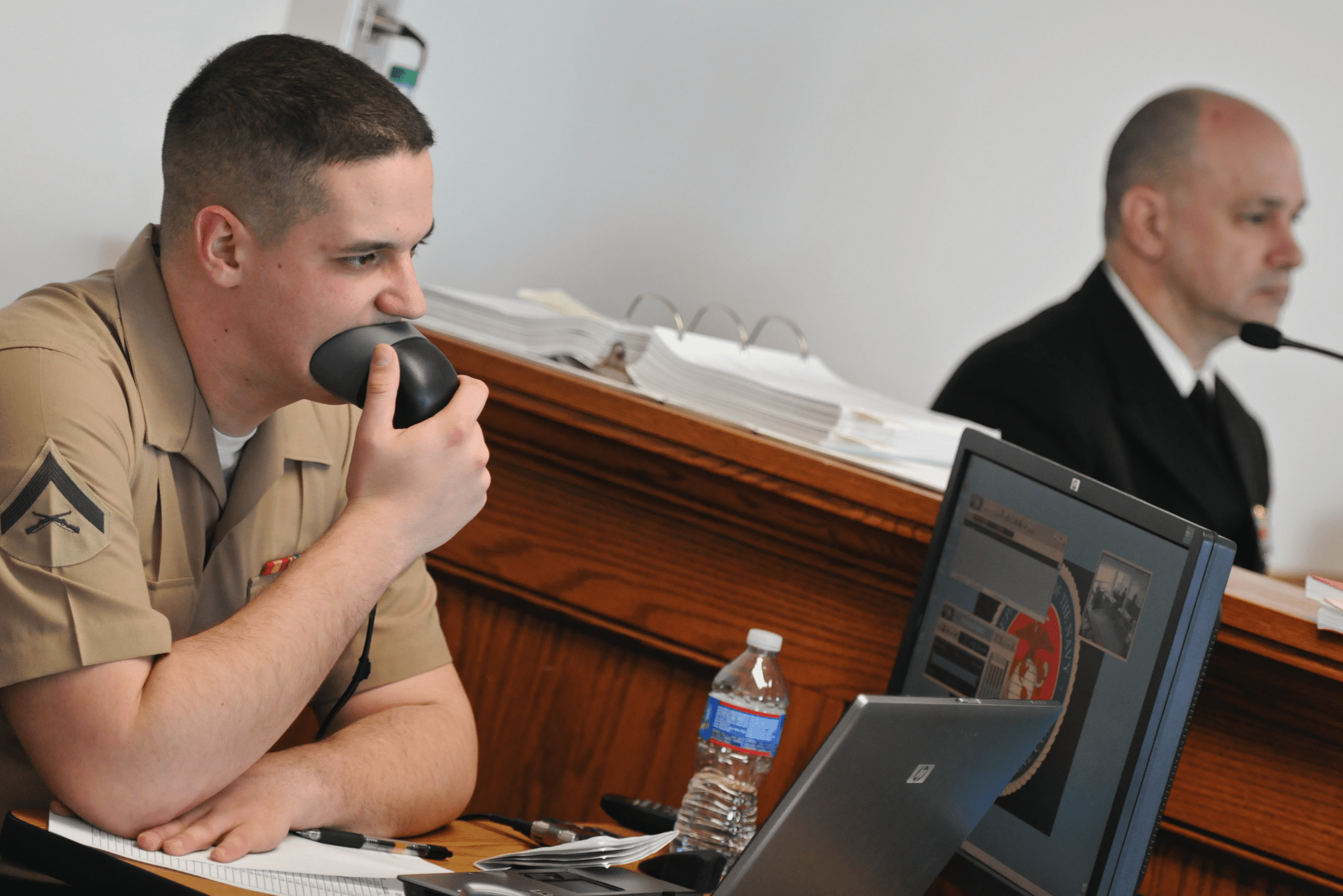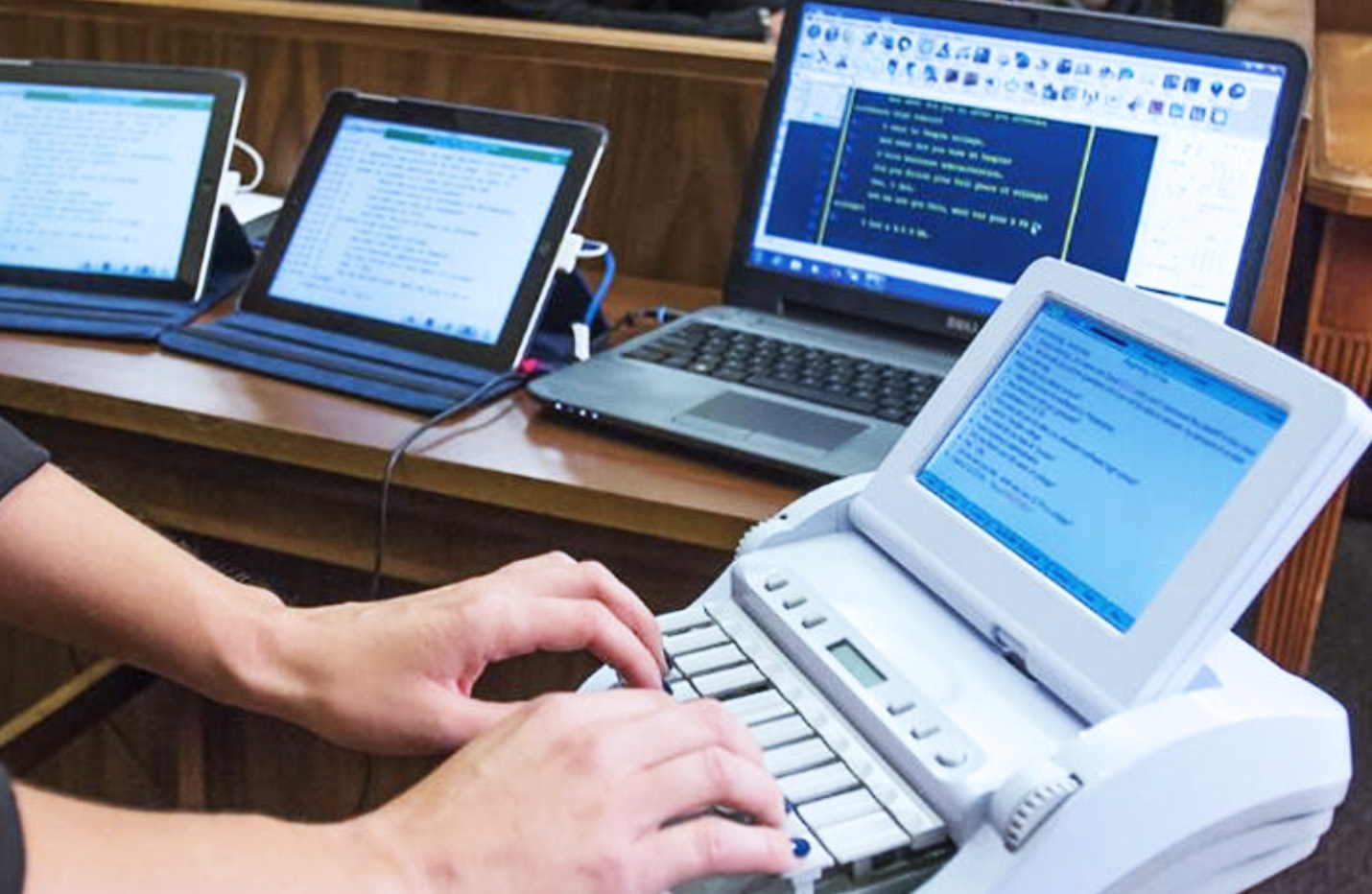Everything About Court Reporting: Essential Insights for Legal Professionals
Court reporting works as a critical element of the legal system, guaranteeing that process are precisely documented. As modern technology developments, the roles and devices of stenotype reporter are progressing. This transformation asks for attorneys to adapt to brand-new methods and modern technologies. Recognizing the intricacies of court coverage can considerably affect situation results. What necessary insights should lawyers grasp to navigate this transforming landscape properly?
The Function of Court Reporters in Legal Proceedings
Stenotype reporter act as the critical voice of the courtroom, recording every talked word during legal proceedings with accuracy and accuracy. They transcribe statements, legal disagreements, and judges' rulings, making certain that a complete document is preserved. This paperwork is necessary for allures, supplying a clear account of what transpired throughout tests and hearings. Court reporters have to have extraordinary paying attention skills and a complete understanding of legal terminology to assist in accurate coverage. They frequently work under pressure, calling for focus and speed to equal the discussion. Their transcripts act as main documents, which can be referenced long after the proceedings end. Along with their transcription responsibilities, stenotype reporter may additionally give real-time reporting, allowing lawyers and courts immediate access to the talked word. On the whole, their role is crucial in supporting the stability and openness of the judicial procedure, contributing especially to the legal profession.

Modern Technology Transforming Court Coverage
As technology breakthroughs, the landscape of court coverage is going through a substantial transformation, boosting the performance and precision of lawful documents. Digital devices such as real-time transcription software application allow court reporters to deliver prompt text output throughout proceedings, enabling lawyers to accessibility information immediately. Remote reporting capabilities have arised, assisting in involvement from various locations with safe and secure video clip conferencing systems.
Artificial intelligence is also making strides, with algorithms efficient in aiding in transcription processes and ensuring greater accuracy in capturing spoken dialogue. In addition, cloud storage services offer safe accessibility to situation data, simplifying partnership between lawyers and court reporters.

These technological innovations not only boost workflow however also reduce the possibility for human mistake, inevitably adding to a much more effective lawful system. The combination of advanced modern technology into court coverage is establishing new criteria for precision and effectiveness in legal documentation, mirroring the evolving demands of the occupation.
Finest Practices for Collaborating With Court Reporters
Effective partnership with court reporters is crucial for guaranteeing prompt and accurate legal documentation. Lawyers should launch interaction early, supplying press reporters with pertinent case information, consisting of names, days, and certain terminology. This foundational information allows reporters to prepare efficiently, reducing the likelihood of errors.
Additionally, preserving open lines of interaction throughout procedures fosters an efficient environment. When necessary, lawful professionals need to encourage court press reporters to seek or ask inquiries information. This practice not only boosts accuracy yet additionally reinforces the functioning relationship.
Additionally, assessing records promptly is crucial. Lawyers should offer positive feedback a knockout post to press reporters, highlighting any kind of discrepancies or areas for renovation. This collective method helps reporters improve their abilities and warranties future work meets the needed standards.
Finally, valuing due dates and acknowledging the reporters' knowledge add to a positive and reliable collaboration, ultimately profiting the whole lawful process.
Recognizing Various Sorts Of Court Coverage Solutions
Various sorts of court reporting solutions accommodate various legal demands, each offering special advantages and performances (durham court reporting). Conventional stenographic coverage is the most typical method, making use of a stenographer who records talked words right into composed text throughout court proceedings. This service provides real-time records, enabling immediate accessibility to process
An additional alternative is digital reporting, which utilizes audio recording technology in addition to transcription services. This technique can be much more affordable and works for catching lengthy sessions where verbatim text is not right away required.
Furthermore, some solutions focus on online or remote coverage, accommodating circumstances where participants can not be literally existing.
Finally, CART (Communication Gain Access To Realtime Translation) services supply real-time transcription for individuals with hearing disabilities, ensuring access throughout lawful process. Each sort of court coverage solution plays a critical duty in the legal process, improving interaction and documentation.
The Future of Court Reporting in the Legal Industry
While innovations in innovation remain to improve lots of markets, the future of court coverage in the lawful sector is poised for substantial transformation. durham court reporting. The enhancing combination of expert system and automatic transcription solutions is expected to improve performance and precision in court coverage. These tools can improve the documents procedure, making it possible for attorneys to concentrate on even more complicated tasks
Moreover, remote court reporting has actually gotten grip, specifically in action to the COVID-19 pandemic. Online hearings and depositions are most likely to become commonplace, requiring court reporters to adjust to new innovations and systems.
As the demand for real-time reporting and instant access to records grows, court reporters will require to refine their skills in electronic proficiency and data management - durham court reporting. The developing landscape tests both provides and opportunities, inevitably redefining the duty of court press reporters within the lawful market. Embracing these modifications will certainly be necessary for keeping significance and providing quality service
Frequently Asked Inquiries
What Credentials Do Court Reporters Required to Practice Expertly?
Stenotype reporter generally need a secondary school diploma, this website specialized training in court reporting, and certification. Proficiency in stenography or voice writing, together with strong language abilities, is vital for exact transcription in legal settings.

How Much Do Court Coverage Provider Usually Expense?
Court reporting solutions normally cost in between $100 to $300 per hour, depending on factors such as experience, place, try this out and complexity of the situation. Additional costs might request transcription and expedited services.
Can Court Reporters Operate In Non-Legal Settings?
Yes, stenotype reporter can operate in non-legal setups, such as closed captioning for tv, transcription solutions for conferences, and creating captions for videos. Their skills in exact paperwork are important in various sectors.
What Is the Average Turnaround Time for Transcripts?
The ordinary turn-around time for records typically varies from 24 hours to a week, relying on variables such as the length of the process, intricacy, and the stenotype reporter's workload. Timeliness is vital in lawful setups.
Do Court Reporters Offer Providers in Multiple Languages?
Court press reporters can provide solutions in several languages, depending upon their credentials and expertise. Several are trained to transcribe in various languages, improving availability and making certain exact paperwork in varied legal proceedings throughout various etymological backgrounds.
Court press reporters serve as the vital voice of the court room, capturing every spoken word throughout lawful process with precision and accuracy. Court press reporters must have phenomenal paying attention abilities and a comprehensive understanding of legal terms to help with accurate reporting. Digital devices such as real-time transcription software application enable court reporters to supply prompt message output throughout process, enabling lawful professionals to access information instantly. Different types of court reporting solutions provide to different legal demands, each offering unique benefits and capabilities. Court reporters commonly require a high college diploma, specialized training in court reporting, and certification.